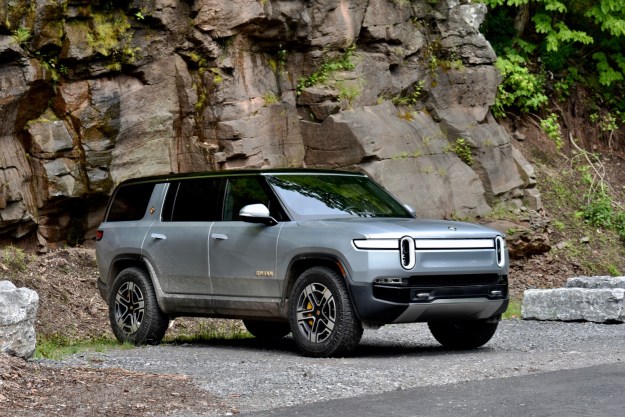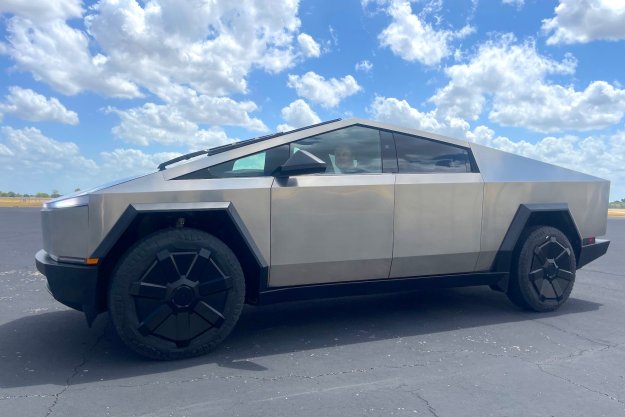
In the last few years, a host of new aerodynamic technologies have emerged. From advanced body cladding to active suspensions and grill shutters, the results have been impressive to say the least. Accordingly, we wanted to delve into that tech, and see what it means for consumers and the future of cars.
Active aerodynamics
One of the biggest innovations in ordinary passenger cars is the advent of what are called “active aerodynamics.” This is industry shorthand for any technology that can change the aerodynamic profile of a car. The two most common examples are grille shutters and adjustable ride height.
Grille shutters are the crazier of the two technologies. Appearing on everything from the Ford Focus to Ram trucks, these systems consist of shutters located behind the radiator grille. At highway speeds the shutters close, sealing the front end of the car. The lack of air flowing over the radiator significantly reduces the aerodynamic drag of the car, allowing the car to more effectively – and efficiently – push through the air.
These technologies — particularly air suspension — are expensive and increase the price of vehicles.
These shutters are connected to the engine coolant temperature sensors via the electronic control unit (ECU). The ECU can open the shutters to allow additional cooling if the engine temp begins to rise. The results are impressive: a 5,000-pound, gas-powered V6 Ram 1500 fitted with active grille shutters can achieve 25 mpg on the highway – in part thanks to its grille shutters.
It is no coincidence that this efficient but bulky Ram also has an air suspension, which not only makes for a more comfortable ride but also allows for the vehicle ride height to be automatically adjusted to improve efficiency.
At freeway speeds, the Ram’s air suspension lowers by 0.6 inches, which decreases wind resistance — albeit slightly. On the highway, the reduced ride height works with the grille shutters to reduce the car’s profile and drag. This innovation is particularly useful on large, brick-shaped trucks like the Ram, which can’t ride low all the time, as they need ground clearance to have any off-road ability.
However, as marvelous as these innovations are, there are some drawbacks. Dropping the ride height on a massive truck like the Ram is no problem, as there is still plenty of space between road and the car’s important bits. On other vehicles, this hunkered-down highway ride height presents a problem.

The Tesla Model S’ air suspension system, too, lowered the vehicle ride height at highway speeds for improved efficiency. Though a great idea in practice, as we saw several times over the last several years, this caused the Teslas to collide with objects on the highway, which sometimes resulted in devastating fires. Since that unpleasant discovery, Tesla has had to update the Model S software, preventing it from hunkering so low at freeway speeds.
For consumers, there are a couple of other considerations, added cost and complexity. These technologies — particularly air suspension — are expensive and increase the price of vehicles. They also add added risk of unreliability and potential repair costs throughout the life of the vehicle.
Oh so slippery
There are some other ways of improving aerodynamics that don’t require electronics or adjustable suspensions. While certain laws of physics dictate the ideal shape for cars, think the teardrop-shaped Prius, there are ways to style a car without carving the same shape over and over.
Look underneath a car from 20 years ago and you will see a confusing jumble of exhaust, structural members, suspension, and fuel tank hoses and do-dads. The underside of a newly designed car, by comparison, is a completely different animal. Most of the non-essential mechanicals have been hidden behind plastic or at least carefully tucked away. A smooth underside promotes smooth airflow and reduced drag. Best of all, these improvements can be made with cheap, simple plastic.

In addition to extra underside plastic, automakers have gotten clever with plastic skirting and elongated bumpers. Not only do these improve the visual dynamics of the car, they also improve airflow, making the car slipperier in the wind. These extra hang-y-down parts prove brilliant for day-to-day driving. When a driver heads off the pavement, though, everything changes. These splitters and wraps not only reduce ground clearance, they are also easy to damage.
Anecdotally, I know a fellow journalist who managed to do $20,000 of damage to a Range Rover Evoque by driving it through some bushes. This won’t be the sort of problem that most sensible drivers encounter, but anyone hoping to do some light off-roading should be on guard.
But automakers aren’t satisfied to give their cars a nice wrap; they want to start trimming pieces on the outside of the car. Believe it or not, side mirrors are a surprisingly large contributor to aerodynamic drag. Depending on the exact size and type of car, removing the mirrors can reduce drag by as much as six percent. While that may not sound like a lot, it matters a lot to automakers.

Regulations currently require side mirrors, but automakers are working hard to change that. In fact, Tesla was hoping to replace the side mirrors with cameras on the upcoming Model X. The company’s inability to change the federal government regulations may be a contributing to the delays in the car’s development, as Tesla seeks to find ways to make up that efficiency.
To see why Tesla is so desperate to make these improvements, we need look no further than Volkswagen hyper-miling marvel, the XL1. This car is supposedly capable of 261 mpg. It gets these results in no small part thanks to one of the slipperiest car bodies ever produced, one with a flat underbody and a noticeable lack of side mirrors, which – if you’d not put two and two together, makes it illegal in the States.
The limits of aerodynamics
As impressive as this technology is, it is ultimately something of a band-aid. To see this in practice, let’s look to the Ram 1500 once again. It may have all the fancy aerodynamic aids in the world, but it is still heavy … and uses a thirsty array of engines.
By contrast, Ford has focused on reducing the weight of its new 2015 F-150 by using aluminum bodywork and investing heavily in — theoretically — efficient turbocharged engines. The result is fuel economy on par, or even slightly better, than the Ram.
This gets at the root of the issue: aerodynamics is critical, but a slippery shape can’t altogether cancel out a thirsty engine or a bridge-breaking curb weight.

For consumers, the additions of cladding and active aerodynamics offer real benefits. However, it is important to understand what costs they impose. So off-roading enthusiasts will want to look and see just how much plastic has been glued to their vehicles, while others concerned with reliability may want to consider the added risk of active aerodynamics.
When it’s all said and done, so long as regulations impose heavy safety equipment, aerodynamics will have a big role to play in the future.


